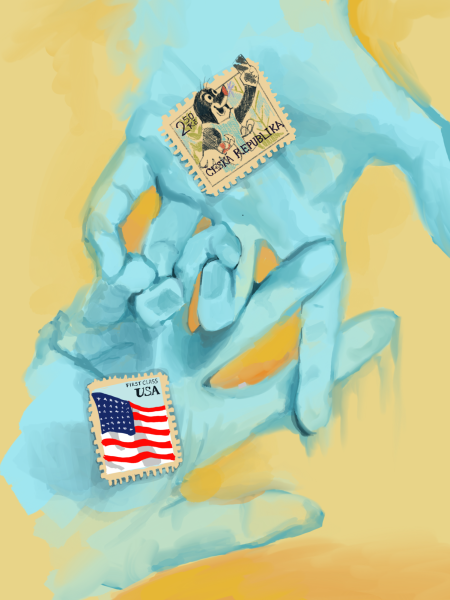Unfair and outdated: Sexist dress codes don’t belong in sports
Mounting onto the four-inch balance beam, I could already feel the thin leotard material tugging against my skin. Deep breath in, I hoped to breeze through the next one minute and thirty seconds of my routine without fixating on receiving the most painfully embarrassing wedgie. A minute passes and I’m feeling hopeful I can fight off the unbearable feeling of performing in a revealing leotard. I confidently swung into a back handspring. Arms in the air to finish the skill, I felt the squeezing elastic cut out of the leotard ride up my body and the judging eyes of middle-aged parents in the stands. Forgetting to maintain decorum while performing, I was possessed by my self-consciousness to pull down on the elastic that was causing me discomfort. Immediately, the sound of judges jotting down this “behavioral violation” was heard, as I would later receive score deductions because of this.
Why did a mid-routine adjustment of the overly revealing attire prove more detrimental to my score than any unpointed toes or flawed execution of skills, I thought when I scored lower than my teammates.
To this day, I wonder how I may have actually felt at ease while performing if USA Women’s Gymnastics policies allowed me the freedom of donning shorts or even a unitard that stretched to my ankles and not at the hips. Having been a subject to unfair athletic rules, the sexist policing of women’s bodies has been amplified by rulebooks such as this.
Since Title IX revolutionized female participation in sports alongside men, there is yet to be an equal playing field regarding dress codes. Whether it be the skimpy leotards, short tennis skirts, or tight spandex shorts, uniform requirements have long displayed female athletes in a hyper-sexualized manner. Struggling to comfortably submit to these policies due to self image-related concerns is an experience many athletes face, professional or amateur. Often, constant hypersexualized judgment of their physique, perpetuated by the uniforms codes, takes attention away from their athleticism or achievements. For women to fully feel comfortable in their sport, sporting institutions must stop mandating strict uniform standards onto women.
Uniforms displaying female athletes’ bodies in a sexualized manner put girls at risk of body image issues. As a result of outdated codes forcing women to expose more skin than their male counterparts, traditional gender stereotypes are reinforced in an attempt to have women appear more feminine. Putting on tighter fitting uniforms in sports is especially difficult for young athletes barely surviving puberty –- a rollercoaster of emotional and physical changes. A recent study showed that by the time girls reach their teen years, their participation in sports drop, with 45 percent of this pattern attributed to self-consciousness and body image related concerns. Young female athletes are subject to feeling insecure when it feels like an audience can see right through them with embarrassingly large amounts of skin being exposed from uniforms.
The imbalanced dressing requirements are set out in great detail in the official rules for a variety of different sports. When we look over our shoulders at our male counterparts making use of looser fitting and less sexualized performance gear, we wonder, Why not us? For example, according to the International Gymnastics Federation guidelines, male gymnasts are given the choice of “long trousers or shorts,” while female gymnasts are only allowed the choice of having sleeves or not in their high-cut leotards. These discrepancies aren’t isolated only to gymnastics; In women’s beach handball, players must wear “midriff” baring tops and “bikini bottoms” that are “cut on the upward angle toward the top of the leg.” In contrast, men are held to “sleeveless shirts” and shorts as a standard.
The disparate rules have historically obliged femininity upon female athletes and further reinforced gender boundaries — as well as consumerism tendencies. Skirts, which have had a long history of sexualizing female athletes since the 19th century, are common in many sports like tennis, golf, or lacrosse today. In the 1970s, Ted Tinling, the host of the Wimbledon tennis tournament and fashion designer, took note of how women needed not only to play the part, but also look the part. Tinling capitalized off of glamorous tennis skirts and dresses as a tactic of reeling in viewers, encouraging fans to view female players as objects of sexual desire. In the eyes of authority figures like Tinling, women continue to compete with men for TV coverage and endorsements through provocative attire. These dress codes enforced by sports governing bodies, half of which have less than 25 percent female figures, display the patriarchal origins running through the veins of sports.
For so long, women in sports have struggled to gain recognition solely for their athletic excellence due to this issue. When audiences obsess over the curve of their hips to the width of their arms due to uniform rules, respect for these athletes fades away to objectifying comments. Even when female athletes hold dominance in their sports, insecurities triggered by the male gaze among audiences set athletes as a target for degradation, preventing them from receiving proper recognition. Professional tennis player Serena Williams, who won four Olympic gold medals and holds more Grand Slam titles than any athlete, has consistently faced public scrutiny through persistent body shaming and sexist attitudes.
Many athletes like Williams have protested the ongoing harm that sexualized uniforms perpetuate onto women. Wearing her full-body cat-suit at the 2018 French Open tournament to help her menstruation, Williams was met with immediate backlash, with the Tennis Federation President Bernad Giudicelli describing this phenomenon as “no longer accepted”, and that “one must respect the game and place.” Giudicelli’s statement implies that in order for a woman to “respect” the game and be allowed on the tennis court, she must appear a certain way, which includes wearing a skirt. This response emphasizes the incessant desire to control how women can and cannot appear, especially since skirts don’t contribute to athletic performance. Similarly, the Norwegian women’s beach handball team was fined $1,700 by the European Handball Federation for competing their championship game in spandex shorts, instead of the required bikini bottoms. This penalty drew widespread criticism of the sexist uniforms that, again, do not enhance performance quality.
Despite these controversies, we do see a slight positive trend in athletes being praised for pushing back against the sexism in female sports. For instance, German gymnasts at the Tokyo Olympic Games wore full body unitards as a protest against “sexualization in gymnastics,” according to the German Gymnastics Federation, aiming to “present aesthetically — without feeling uncomfortable.” Although their more modest uniform was permitted by the International Gymnastics Federation guidelines, it caught global media attention immediately, with many commending women’s sartorial freedom to cover up and prioritize comfortability in sports.
Though these examples have paved the way for more women in sports to combat dress codes based on archaic ideas of the male gaze, it’s hard to tell when this normalized sexualization of female body parts will end. From receiving a score deduction for fixing the unbearable wedgie of my skimpy leotard to professional athletes being fined for wearing shorts, these rules need to go. For as long as patriarchal systems and beauty standards roam, women have few spaces to dictate their own bodily autonomy.

Sierra is a senior at Lowell. She loves munching on school lunch hotdogs and updating her secret Letterboxd account. Sierra also loves sunny weather.

Emily Yee is a senior at Lowell. She is very cool and amazing and awesome.












